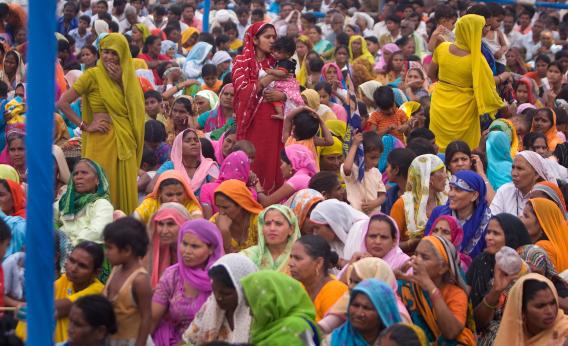Recent studies have suggested that India’s traditional caste system remains surprisingly intact despite the country’s economic surge. A 2011 report, for instance, found that in “40 percent of the schools across sample districts in Uttar Pradesh—India’s most populous state, with 199 million people—teachers and students refuse to partake of government-sponsored free midday meals because they are cooked by dalits (once known as untouchables).” It’s also certainly still a factor in the country’s politics, as shown by the emergence of the controversial Dalit politician Mayawati.
But when did the caste system actually begin? One team of researchers believes the country’s genetic history holds the key. In a recent paper published in the American Journal of Human Genetics, researchers from Harvard, MIT, and the CSIR-Centre for Cellular and Molecular Biology in Hyderabad assembled what they call the “most comprehensive sampling of Indian genetic variation to date,” using samples collected from 571 individuals belonging to 73 “well-defined ethno-linguistic groups.” The data allowed the authors to trace not just the genetic mixture between these groups but how long ago this mixture occurred.
Five thousand years ago, the ancestors of modern Indians were comprised primarily of two groups: ancestral North Indians, who related to people of Central Asia, the Middle East, the Caucasus, and Europe, and ancestral South Indians, who are not closely related to groups outside the subcontinent. The mixture between these two groups and their many subcategories happened mostly between 4,200 and 1,900 years ago, according to the study. The authors note that this period is significant as it was a “time of profound change in India, characterized by the deurbanization of the Indus civilization, increasing population density in the central and downstream portions of the Gangetic system, shifts in burial practices, and the likely first appearance of Indo-European languages and Vedic religion in the subcontinent.”
Around 1,900 years ago, the mixture largely stopped, as Indian society moved toward endogamy—the practice of avoiding intermarriage or close relationships between ethnic groups—which reached its most extreme form in the creation of the caste system. As one of the study’s authors told the Times of India, “the present-day structure of the caste system came into being only relatively recently in Indian history.”
How long it will last into the future is another question.
